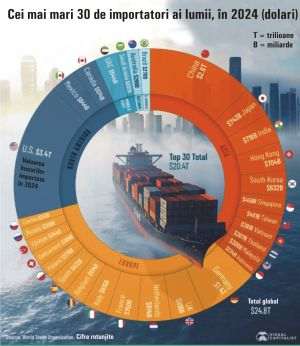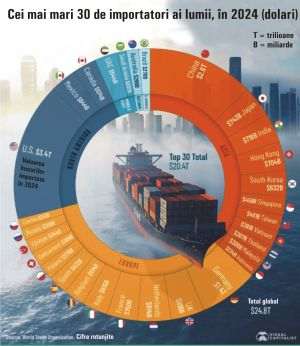Climate change also brings with it a procession of natural disasters. Violent storms are more and more present, there are areas of the globe that are more and more affected by them. The El Nino phenomenon and climate change caused by human activities caused a record number of environmental disasters in Latin America in 2023, announced the World Meteorological Organization (WMO), a UN agency. Last year was the warmest ever recorded by meteorologists in this region of the world, according to the new report, which signals that rising sea levels and retreating glaciers have continued, while "a major shift" in the distribution of rainfall across the subcontinent has caused droughts , wildfires, floods and landslides. "Unfortunately, 2023 was a year of record climate catastrophes in Latin America and the Caribbean," said Celeste Saulo, Secretary General of the WMO, quoted in a statement. In 2023, 67 episodes of meteorological, hydrological and climatic catastrophes were reported in this region. Of them, 77% were associated with storms and floods, states the WMO report, which is based on data provided by the Center for Research in the Epidemiology of Catastrophes (CRED). Among the climate catastrophes of 2023, the WMO specifically mentioned Hurricane Otis, which devastated the Mexican resort of Acapulco in October, killing at least 45 people and causing huge material damage. The WMO attributed the intensification of these extreme events to the combination of El Nino and the consequences of climate change induced by human activities. The same agency described El Nino as a natural meteorological phenomenon associated with warming surface water temperatures in the tropical Pacific, which generally occurs with a two- to seven-year rhythm and lasts between nine and 12 months.
The organization also noted the intense drought that has affected the region, causing the Rio Negro, one of the tributaries of the Amazon River, to record its lowest level in more than 120 years of hydrological measurements and for maritime traffic through the Panama Canal to be severely affected since August. In addition, the drought in the La Plata basin affected northern Argentina and southern Brazil and hit Uruguay hard, which experienced its driest summer in 42 years and acute water shortages. To all these phenomena, the WMO added the torrential rains that caused dozens of deaths from landslides and floods, both in southeastern Brazil in February and in Jamaica, Haiti and the Dominican Republic in November.
Last week, the south of Brazil was again affected by torrential rains, which caused 100 deaths, according to the latest report. In 2023, the average temperature was the highest ever recorded by meteorologists in Latin America in the Caribbean Sea area: it exceeded by 0.83 degrees Celsius the average of the period 1991-2020 and by 1.39 degrees Celsius the average of the reference period 1961 -1990, stated the WHO. In Mexico, the fastest warming country in this region, the boreal summer was exceptionally warm, with a maximum value of 51.4 degrees Celsius recorded in August. Central South America also faced scorching heat from August to December. In certain regions of Brazil, thermometers indicated 41 degrees Celsius in August, in the middle of winter in the southern hemisphere. Argentina, Brazil, Bolivia, Paraguay and Peru recorded the highest temperatures for the month of September, and important vegetation fires broke out in several areas. The WMO also warned about the acceleration of sea level rise. According to its new report, in Chile, the Echaurren Norte glacier, considered a benchmark for the World Glacier Monitoring Service (WGMS), retreated by about 31 meters between 1975 and 2023. At the same time, the WMO considered meteorological and climatological services "inadequate" supplied in Latin America and the Caribbean region. The organization however highlighted "progress made to increase the resilience of the health sector to climate change", noting that in 12 of the 35 countries in the region, WMO has made "significant progress" in the provision of meteorological and climatological services.
Snow in Moscow
On the other hand, an unusual snowfall for this time of the year took place in Moscow on Wednesday, which covered itself with a white blanket, on the eve of Victory Day over Nazi Germany, Russia's most important holiday. Lapoviţă had been reported since Tuesday in the Russian capital. If the thin layer of snow deposited in the early hours of the morning melted after the sun made its appearance shortly after lunchtime, the streets were once again covered in a blanket of white in the afternoon in Moscow, where a blizzard was recorded strong. Temperatures dropped to minus 1-2 degrees during the night and in the early hours of the morning, unusual weather for the beginning of May in the center of the European part of Russia. The meteorological services stated that Moscow is currently experiencing the lowest temperatures since the end of the last century (1999), forecasting that the cold will ease only over the weekend, and temperatures will not exceed 10 degrees on average daily until mid-May.








































